Yeast based small molecule screen for inhibitors of SARS-CoV
- PMID: 22164298
- PMCID: PMC3229576
- DOI: 10.1371/journal.pone.0028479
Yeast based small molecule screen for inhibitors of SARS-CoV
Abstract
Severe acute respiratory coronavirus (SARS-CoV) emerged in 2002, resulting in roughly 8000 cases worldwide and 10% mortality. The animal reservoirs for SARS-CoV precursors still exist and the likelihood of future outbreaks in the human population is high. The SARS-CoV papain-like protease (PLP) is an attractive target for pharmaceutical development because it is essential for virus replication and is conserved among human coronaviruses. A yeast-based assay was established for PLP activity that relies on the ability of PLP to induce a pronounced slow-growth phenotype when expressed in S. cerevisiae. Induction of the slow-growth phenotype was shown to take place over a 60-hour time course, providing the basis for conducting a screen for small molecules that restore growth by inhibiting the function of PLP. Five chemical suppressors of the slow-growth phenotype were identified from the 2000 member NIH Diversity Set library. One of these, NSC158362, potently inhibited SARS-CoV replication in cell culture without toxic effects on cells, and it specifically inhibited SARS-CoV replication but not influenza virus replication. The effect of NSC158362 on PLP protease, deubiquitinase and anti-interferon activities was investigated but the compound did not alter these activities. Another suppressor, NSC158011, demonstrated the ability to inhibit PLP protease activity in a cell-based assay. The identification of these inhibitors demonstrated a strong functional connection between the PLP-based yeast assay, the inhibitory compounds, and SARS-CoV biology. Furthermore the data with NSC158362 suggest a novel mechanism for inhibition of SARS-CoV replication that may involve an unknown activity of PLP, or alternatively a direct effect on a cellular target that modifies or bypasses PLP function in yeast and mammalian cells.
Conflict of interest statement
Figures
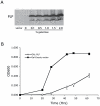
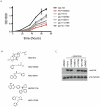
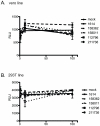
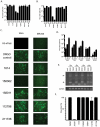

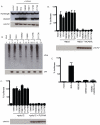
References
-
- Katz JM, Lu X, Frace AM, Morken T, Zaki SR, et al. Pathogenesis of and immunity to avian influenza A H5 viruses. Biomed Pharmacother. 2000;54:178–187. - PubMed
-
- Gee MH, Gottlieb JE, Albertine KH, Kubis JM, Peters SP, et al. Physiology of aging related to outcome in the adult respiratory distress syndrome. J Appl Physiol. 1990;69:822–829. - PubMed
-
- Sheng WH, Chiang BL, Chang SC, Ho HN, Wang JT, et al. Clinical manifestations and inflammatory cytokine responses in patients with severe acute respiratory syndrome. J Formos Med Assoc. 2005;104:715–723. - PubMed
-
- Chen J, Subbarao K. The Immunobiology of SARS*. Annu Rev Immunol. 2007;25:443–472. - PubMed
Publication types
MeSH terms
Substances
Grants and funding
LinkOut - more resources
Full Text Sources
Research Materials
Miscellaneous

